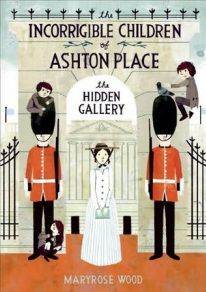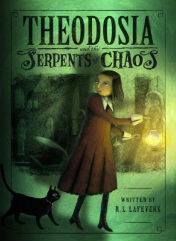
Stone Fox by John Reynolds Gardiner
Scholastic, 1980
Ten-year-old Willy and his grandfather run a small farm just outside Jackson, Wyoming. One day, Grandfather wouldn't get out of bed and wouldn't talk. Doc Smith insisted nothing was physically wrong with him but that he had given up, and neither Doc nor Willy knew why. For the next few months, Willy takes care of Grandfather and the farm with his beloved dog Searchlight by his side. When a tax collector shows up and insists that they pay him $500 or the farm will be taken away, Willy must figure out a way to get that money. A local sled race looks to be the best bet, and a very large gamble it is.
I read a blog post on the first day of the Iditarod a few weeks ago, and this book was reviewed as a great example of a dog race story. I checked the elementary library and it was there, so I snatched it up and finally read it last night.
The review I read was correct: this is a superb dog race story. But it is far more than a book simply about a dog race, as I hope my above synopsis indicates. Willy is a remarkably capable young boy who not only takes care of himself and his grandfather by cooking meals and tending the fire but harvests the potato crop, sells the potatoes, purchases provisions for the winter, and attends school, all of which he takes in stride. Granted, this book is set at an indeterminate point in the past - probably around the turn of the 20th century - when rural children had many responsibilities from a young age, but his determination and independence is no less impressive.
The title of the book is taken from the name of Willy's main competitor in the dog race, a First Nations man of seemingly incalculable height who has never lost a race and never speaks. Although the word Indian is used to describe Stone Fox (likely due to the book being written 30 years ago), I appreciated the brief description of his use of his winnings to purchase land for displaced members of his Shoshone people to live on. The correlation between his motivation to win and Willy's motivation to win was not lost on either of them.
Ah, Searchlight. Searchlight, Searchlight, Searchlight. Why do I keep reading books that make me want a dog? I don't have room, I'm not a fan of fur or drool, and vet bills would have me owing terrifying amounts of money to Visa. But geez, do I ever want a dog like Searchlight! She's so devoted to Willy that she waits for him all day outside his school and she adores racing home through the woods. I mean, who wouldn't want a dog that could haul you a few miles home while you rode a dog sled behind them? Going dog sledding is on my bucket list though, so perhaps it is just me.
Gardiner packs a lot of heart into 81 pages. Great story, great characters (both human and dog), and great ending.
Scholastic, 1980
Ten-year-old Willy and his grandfather run a small farm just outside Jackson, Wyoming. One day, Grandfather wouldn't get out of bed and wouldn't talk. Doc Smith insisted nothing was physically wrong with him but that he had given up, and neither Doc nor Willy knew why. For the next few months, Willy takes care of Grandfather and the farm with his beloved dog Searchlight by his side. When a tax collector shows up and insists that they pay him $500 or the farm will be taken away, Willy must figure out a way to get that money. A local sled race looks to be the best bet, and a very large gamble it is.
I read a blog post on the first day of the Iditarod a few weeks ago, and this book was reviewed as a great example of a dog race story. I checked the elementary library and it was there, so I snatched it up and finally read it last night.
The review I read was correct: this is a superb dog race story. But it is far more than a book simply about a dog race, as I hope my above synopsis indicates. Willy is a remarkably capable young boy who not only takes care of himself and his grandfather by cooking meals and tending the fire but harvests the potato crop, sells the potatoes, purchases provisions for the winter, and attends school, all of which he takes in stride. Granted, this book is set at an indeterminate point in the past - probably around the turn of the 20th century - when rural children had many responsibilities from a young age, but his determination and independence is no less impressive.
The title of the book is taken from the name of Willy's main competitor in the dog race, a First Nations man of seemingly incalculable height who has never lost a race and never speaks. Although the word Indian is used to describe Stone Fox (likely due to the book being written 30 years ago), I appreciated the brief description of his use of his winnings to purchase land for displaced members of his Shoshone people to live on. The correlation between his motivation to win and Willy's motivation to win was not lost on either of them.
Ah, Searchlight. Searchlight, Searchlight, Searchlight. Why do I keep reading books that make me want a dog? I don't have room, I'm not a fan of fur or drool, and vet bills would have me owing terrifying amounts of money to Visa. But geez, do I ever want a dog like Searchlight! She's so devoted to Willy that she waits for him all day outside his school and she adores racing home through the woods. I mean, who wouldn't want a dog that could haul you a few miles home while you rode a dog sled behind them? Going dog sledding is on my bucket list though, so perhaps it is just me.
Gardiner packs a lot of heart into 81 pages. Great story, great characters (both human and dog), and great ending.


 RSS Feed
RSS Feed